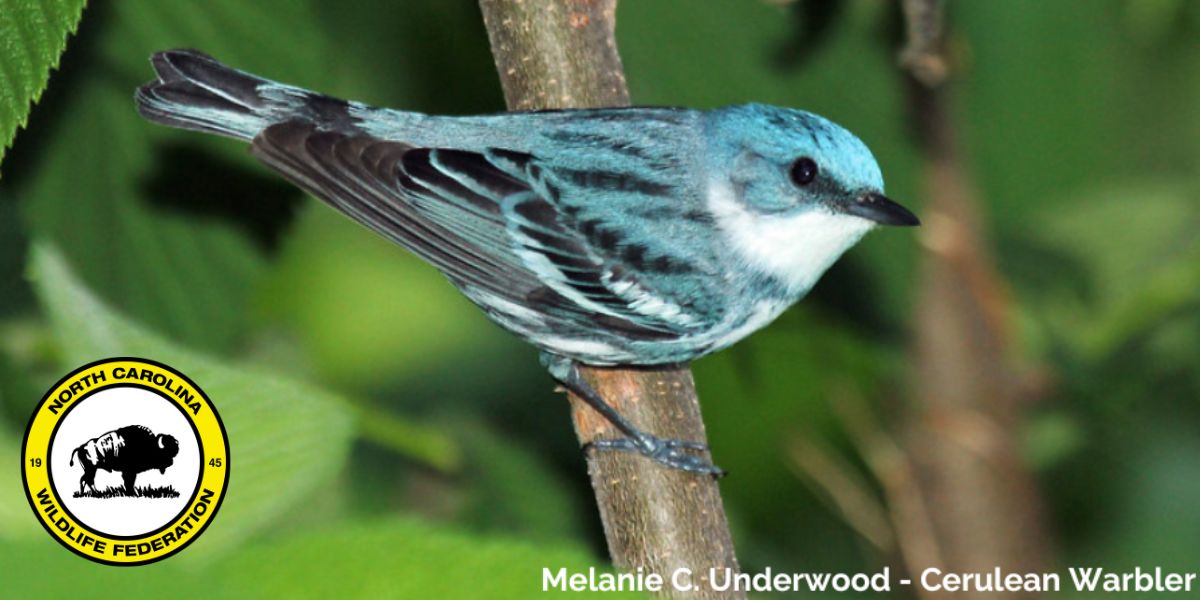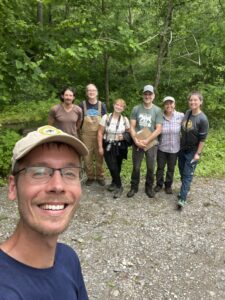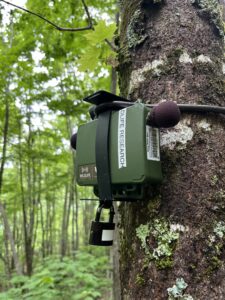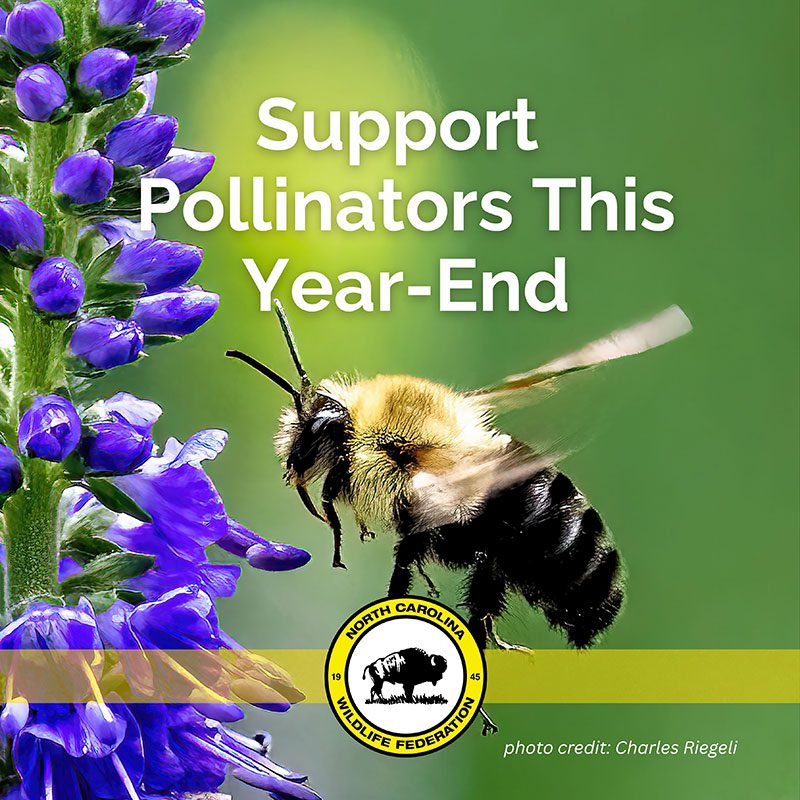UPDATE! Cerulean Warbler and Avian Diversity Survey: A Successful Season in the Field

The North Carolina Wildlife Resources Commission (NCWRC) recently released the draft of the 2025 North Carolina State Wildlife Action Plan (SWAP)—a document that plays a foundational role in guiding wildlife conservation efforts across the state for the next decade. First developed in 2005, the SWAP is a strategic plan updated every 10 years to assess the needs of North Carolina’s wildlife and habitats, identify key conservation priorities, and outline actions needed to sustain species and ecosystems over time.
The SWAP serves as North Carolina’s roadmap for managing fish and wildlife species and habitats, especially those in decline or at risk. Central to the plan is the identification of Species of Greatest Conservation Need (SGCN)—wildlife species that require targeted attention due to low or declining numbers, habitat loss, or other threats.
 The goals outlined in the SWAP intersect closely with NCWF’s own Conservation Impact Plan, focusing on protecting, conserving, and restoring wildlife and their habitats across the state. Through our network of Community Wildlife Chapters and conservation partners, NCWF works to improve outcomes for wildlife—especially SGCN—through habitat protection, policy engagement, education, and on-the-ground restoration projects.
The goals outlined in the SWAP intersect closely with NCWF’s own Conservation Impact Plan, focusing on protecting, conserving, and restoring wildlife and their habitats across the state. Through our network of Community Wildlife Chapters and conservation partners, NCWF works to improve outcomes for wildlife—especially SGCN—through habitat protection, policy engagement, education, and on-the-ground restoration projects.
The cerulean warbler (Setophaga cerulea) is an example of a SGCN facing a 74% decline in Appalachian forests primarily due to habitat loss impacting their breeding grounds, stopover habitats, and wintering grounds. Cerulean warblers are brilliant skyblue songbirds that migrate over 2,500 miles between their breeding and wintering grounds. This species needs mature and old-growth deciduous forests in the eastern United States to maintain and grow its population.
Our national forests in North Carolina contain a significant amount of the remaining old-growth forests in the Southern Appalachian mountains. The national forests of western North Carolina are a biodiversity hotspot that provide critical habitat for cerulean warblers and numerous other SGCN such as the worm-eating warbler (Helmitheros vermivorum), acadian flycatcher (Empidonax virescens), and wood thrush (Hylocichla mustelina).
 This past spring, NCWF partnered with the National Parks Conservation Association, the Center for Biological Diversity, Defenders of Wildlife, MountainTrue, Southern Appalachian Highlands Conservancy, and the NCWRC, with support from the U.S. Forest Service, to implement a cerulean warbler and avian diversity survey focused on the last remaining patches of old-growth forests and maturing second-growth forests within our study area – the Craggy Mountains – a 16,000 acre portion of Pisgah National Forest where the presence of cerulean warblers and other avian SGCN is largely unknown.
This past spring, NCWF partnered with the National Parks Conservation Association, the Center for Biological Diversity, Defenders of Wildlife, MountainTrue, Southern Appalachian Highlands Conservancy, and the NCWRC, with support from the U.S. Forest Service, to implement a cerulean warbler and avian diversity survey focused on the last remaining patches of old-growth forests and maturing second-growth forests within our study area – the Craggy Mountains – a 16,000 acre portion of Pisgah National Forest where the presence of cerulean warblers and other avian SGCN is largely unknown.
Our goal was to fill area-specific knowledge gaps through science-based data collection to assist with future forest management decision-making and conservation efforts. To achieve this goal, we deployed bioacoustic recorders in forested areas to record any audible bird activity, and we are currently evaluating the collected audio using BirdNET Sound ID (Cornell University) to determine species presence. When deploying the audio recorders, we selected our sample sites based on forest stand age and natural community type across the study area, and we used LiDAR to pinpoint favorable forest structure and topographic positions within sample sites. LiDAR is a tool commonly used to determine topographical surfaces to create three dimensional images, which is extremely helpful when evaluating landscape features.
Volunteer engagement was a particularly important component of this project. Deploying the bioacoustic recorders in the field was no small feat. The Craggy Mountains are known for their rugged terrain, steep slopes, and mature forests; therefore, NCWF  and partners recruited and led volunteers in the field to install the audio recorders. This sometimes involved hiking more than five miles off trail to reach survey sites. The response to our call for volunteers and their dedication to the fieldwork was inspiring and much appreciated. We are incredibly thankful for all the volunteers who helped with this effort. Volunteers had the opportunity to see some of the most remote areas of western North Carolina while working directly with conservation partners for up to eight hours a day, getting real, hands-on field experience from wildlife professionals.
and partners recruited and led volunteers in the field to install the audio recorders. This sometimes involved hiking more than five miles off trail to reach survey sites. The response to our call for volunteers and their dedication to the fieldwork was inspiring and much appreciated. We are incredibly thankful for all the volunteers who helped with this effort. Volunteers had the opportunity to see some of the most remote areas of western North Carolina while working directly with conservation partners for up to eight hours a day, getting real, hands-on field experience from wildlife professionals.
This year’s survey is complete, but the work is not done. We collected an incredible amount of audio data that will need to be analyzed, and the results will assist us as we prepare for next year’s survey. This project is especially important given the impacts of Hurricane Helene to Pisgah National Forest. It’s hard to say to what degree cerulean warblers and other bird species’ breeding habitat has been impacted, but this project offers an unprecedented opportunity to gain knowledge on forest succession and avian composition following a historic disturbance. We plan to continue this survey for years to come and encourage our volunteers to help out with this collaborative effort to study long-term avian diversity in the Craggy Mountains of North Carolina.
The survey results will be used to educate and inspire the birding and non-birding public on Southern Appalachian neotropical bird migrant diversity, causes of decline, and opportunities for increased protections. Further, there’s an opportunity to support the designation of the Craggy Mountains as a National Scenic Area. This designation would permanently protect 16,000 acres of enchanting old-growth forests, pristine watersheds, trout streams, world-class hiking trails, and stunning panoramic views of the Blue Ridge Mountains. According to the Southern Environmental Law Center, more than 80% of the proposed scenic area is visible from the Blue Ridge Parkway, culminating in viewshed preservation and species biodiversity protection. To learn more and sign the petition to create the Craggy National Scenic Area, please visit the site HERE.
Birds help us understand the significance of old-growth forests. Not only for the protection of these species, but also for mammals, salamanders, insects, mosses, lichens, and more. Because birds serve as an ecosystem indicator, the more we learn about these species and where they go – particularly birds considered SGCN – the more we can make the case for the protection of the Craggy Mountains.
Written by:

– Luke Bennett, NCWF Conservation Coordinator

– Dr. Liz Rutledge, NCWF VP of Wildlife Resources


